Ho Chi Minh to Mui Ne by Motorbike: The Ultimate Road Trip Guide
Riding a motorbike to Mui Ne is the best way to escape the bustle of Ho Chi Minh City if you’re there looking for an adventure. This trip provides an opportunity to see natural beauties, local culture, and Vietnam’s picturesque coastline routes. Let MOTOGO Tours discover the best way from Ho Chi Minh to Mui Ne by motorbike

Why Travel from Ho Chi Minh to Mui Ne by Motorbike?
One of the most exciting and real means to see Vietnam is by motorbike. You will be discovering a closer relationship with the ground, meandering around the countryside, and exploring secret treasures. Riding from Ho Chi Minh to Mui Ne implies you are living the trip rather than only visiting a location.
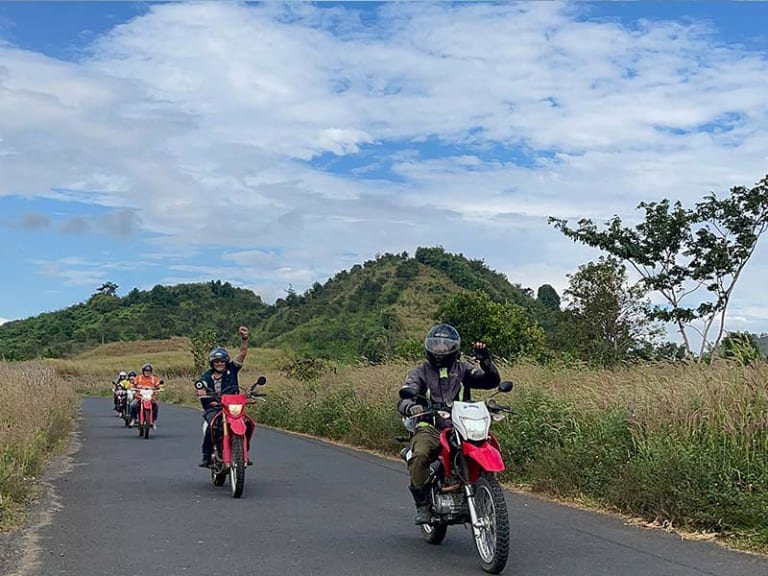
A motorbike’s adaptability also allows you to stop anytime you feel like seeing the scenery, snapping some pictures, or speaking with residents. That is quite different from being limited to a tour bus or car. Unmatched is the sense of freedom; your finest route map to a life-changing event is the wide road.
Ho Chi Minh to Mui Ne by Motorbike: A Journey Along Vietnam’s Ocean Road
Starting a motorbike trip from Ho Chi Minh to Mui Ne guarantees breathtaking views, cultural insights, and a real understanding of Vietnam’s varied terrain. From busy metropolitan streets to calm beaches and coastal roads dotted with natural beauty, this coastal journey consists in several phases. Let us go over every part of this trip.
SECTION 1: Ho Chi Minh to Ba Ria (via Cat Lai Ferry) | Distance: 80km
Leave ideally between 4:00 and 4:30 am to avoid the congestion at peak hours and the accompanying pollution. You will head east to catch the Cat Lai Ferry from the Dong Nai River docks. The first light of the day will start to glitter over the water as the boat takes off, offering an amazing perspective as you cross the river in just five to ten minutes. During the day, ferries run every fifteen minutes providing a flawless and beautiful beginning to the trip.
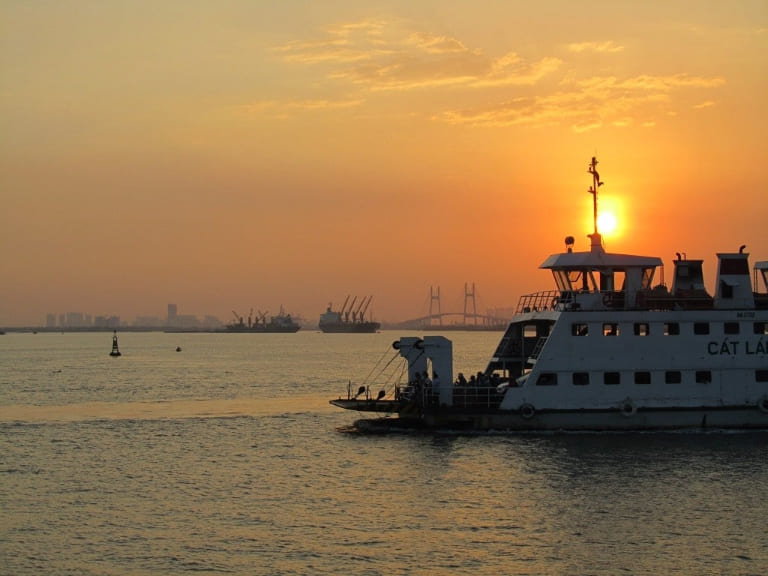
Once on the other side in Dong Nai Province, the landscape transforms and you bid farewell to the activity of the city. On routes DT769 and HL13, you will find little roadside stands offering seasonal fruits such jackfruit, durian, and coconut, as well as rubber tree plantations and rich green scenery. Still, the serenity is fleeting since HL13 guides you throughout Nhon Trach’s industrial zone. When you hit Highway QL51, be ready for a more vigorous journey featuring trucks and dust.

With its lovely environment and tree-lined streets, Ba Ria presents a welcome change. The city’s orderly design, colonial buildings, and spotless streets make it ideal for a break. From one of the other roadside vendors, get some mouthwatering bánh bao 69, steamed rice dumplings. Impressive pagodas border the route, and following Phu My, green hills start to rise on the horizon, indicating the natural beauty just waiting.

>>> Explore: Saigon to Dalat by Motorbike – Complete Guide to an Epic Journey
SECTION 2: Ba Ria to Long Hai, Phuoc Hai, Loc An, River Ray | Distance: 40km
Gradually heading south on DT44A from Ba Ria, you will pass the salt fields on your right and the undulating green hills on your left. Families from Saigon frequent this town as a weekend vacation, even though the muddy waters make the beaches unsuitable for swimming. Especially on public holidays, the area is humming with bustle.
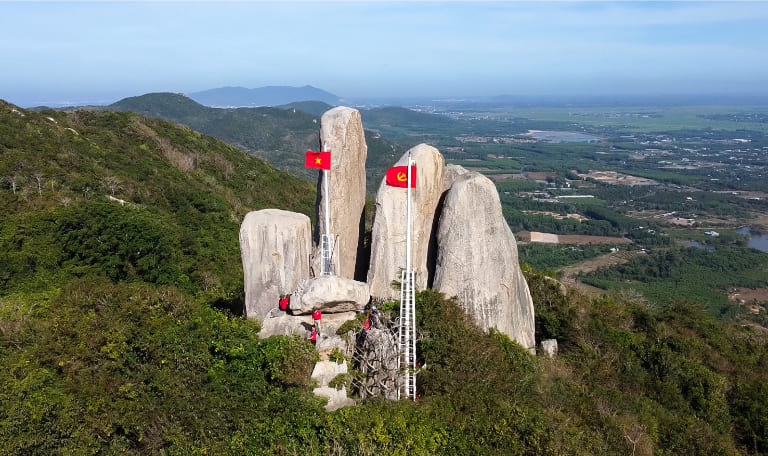
See the historical location Minh Dam Resistance Base, which provides panoramic views of the surrounding hills, right from the conflicts. You will find yourself crossing lush farms and rice fields as you go, with sporadic views of the coast and little fishing settlements. The River Ray, a serene location where the river meets the sea, will be reached from a lovely stretch of road providing a pleasant place to pause and appreciate the view.
SECTION 3: River Ray – Ho Tram – Ho Coc – Binh Chau | Distance: 30km
Curving down the coast, leaving River Ray, the Ocean Road opens the well-known beach locations of Ho Tram and Ho Coc. While budget visitors can investigate local camping sites or small mini-hotels buried below Ho Tram’s beach area, Ho Tram’s best choice for high-end lodging is the Boutique Hotel. Don’t miss a seafood meal at Mỹ Lệ, a beachside treasure with real, simple cuisine featuring fresh shellfish, prawns, crab, and fish.
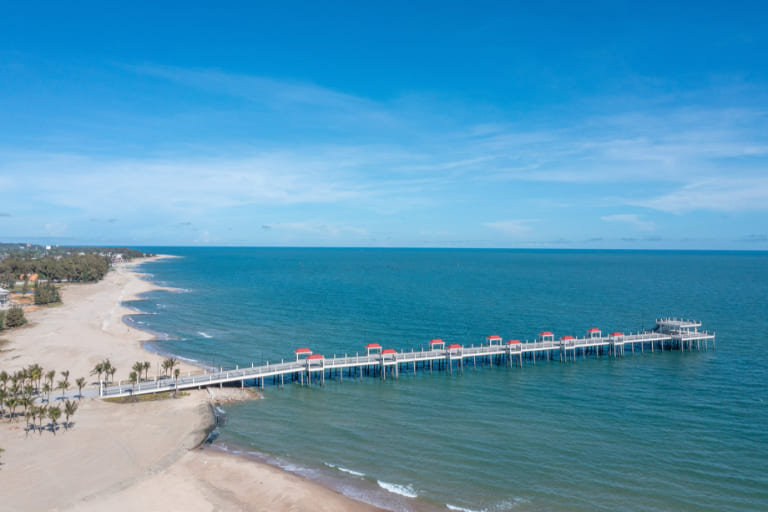
Further down the coast, Ho Coc, a long beach surrounded by thick jungle, is a preferred get-away for young Saigon residents. Weekdays are calmer even if weekends are packed. For lunch and a quick beach break, Ven Ven is a fantastic place; alternatively, tourists may access several beachfront spots for a laid-back lounging on deck chairs for a little cost.

Beyond Ho Coc sits Binh Chau, where the coast seems wild and unbridled. Though some sad wayside trash along this length, its huge sand dunes and saline sea breeze create amazing beauty. One of the main attractions here is Binh Chau Hot Springs, which provides mud baths among a verdant surroundings. Before you travel on, the springs offer a deserved rest and an opportunity to unwind.
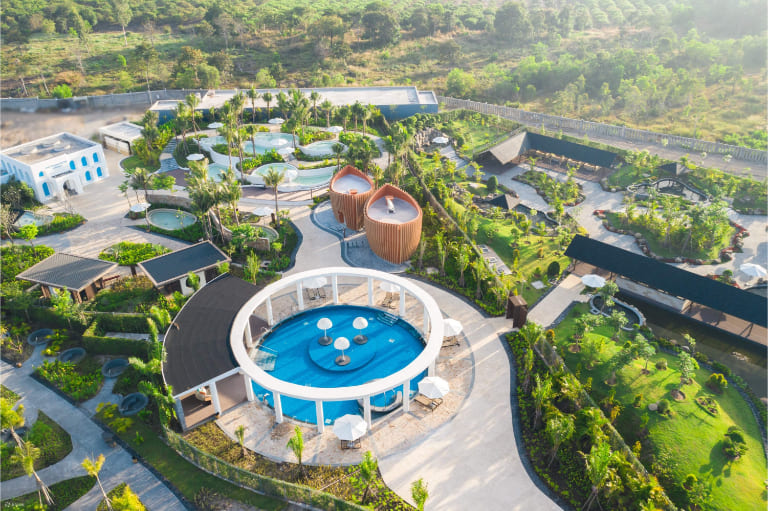
>>> Explore the Khmer Temple-Hopping Motorbike Loop in Tra Vinh | A Cultural Adventure
SECTION 4: Binh Chau – Lagi – Ta Cu Mountain – Ke Ga | Distance: 65km
From Binh Chau, the drive east along Highway QL55 winds through river valleys and rich farms. Village life hums along the road as kids wave wildly at foreign riders. The hammock cafés in this part provide a comfortable way to bask in the rustic beauty while observing buffalo wade in fields beneath tall coconut trees. From a sandy ridge with views of cashew and eucalyptus woods, the road then rises to Lagi, a busy fishing town.
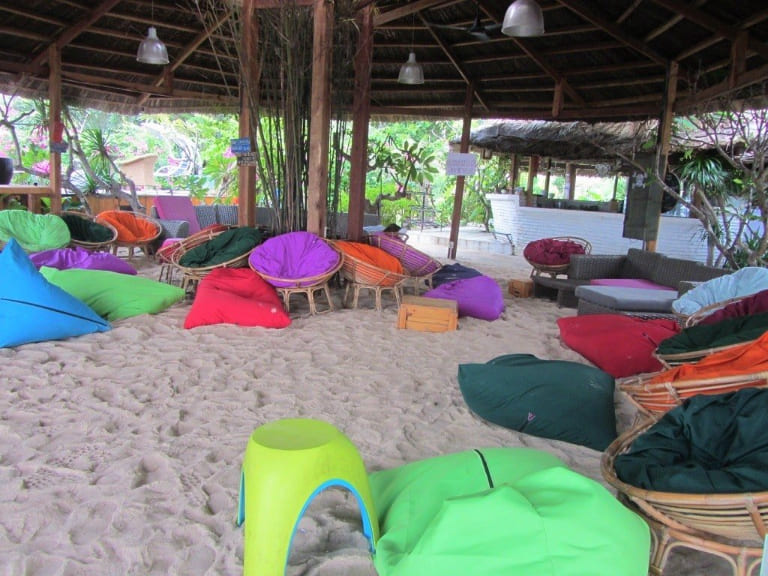
Highlights of Lagi include the seafood stands at Cam Binh Beach and the laid-back, seaside locations as well as the eccentric, vibrant Coco Beachcamp ideal for beachside beverages. With local restaurants and reasonably priced lodging, this coastal town is perfect for an overnight visit between Ho Chi Minh and Mui Ne. Although its town core radiates real Vietnamese bustling, the beach area has some new development promise.
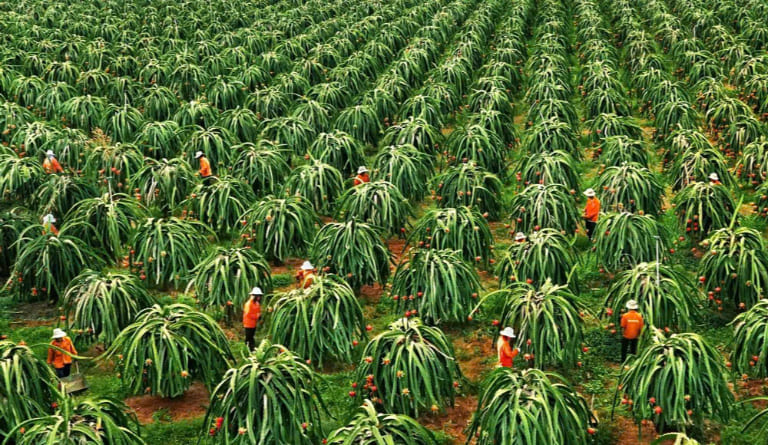
If you want to see more, think about a side excursion to the Dinh Thầy Thím temple, which hosts events drawing thousands of pilgrims annually. The route meanders around large dragon fruit fields continuing east, providing picturesque views of Ta Cu Mountain. For those looking for a peaceful, less-traveled diversion, a cable car ride up the mountain results in amazing Buddhist monuments and panoramic views over the coast.
SECTION 5: Ke Ga – Tien Thanh – Phan Thiet – Mui Ne | Distance: 55km
Swinging north around Ke Ga’s rocky cape, the road windswept shoreline skips sections of uninhabited beaches. While Anh Duong Resort presents a reasonably priced place for a night’s rest by the ocean, Rock Water Bay offers a mid-range stay among stunning views. Although the shoreline here is pleasant, some places need maintenance because of litter left along the rocky outcrops. Notwithstanding these small problems, the exhilaration of beach road riding and the natural beauty make it worthwhile.
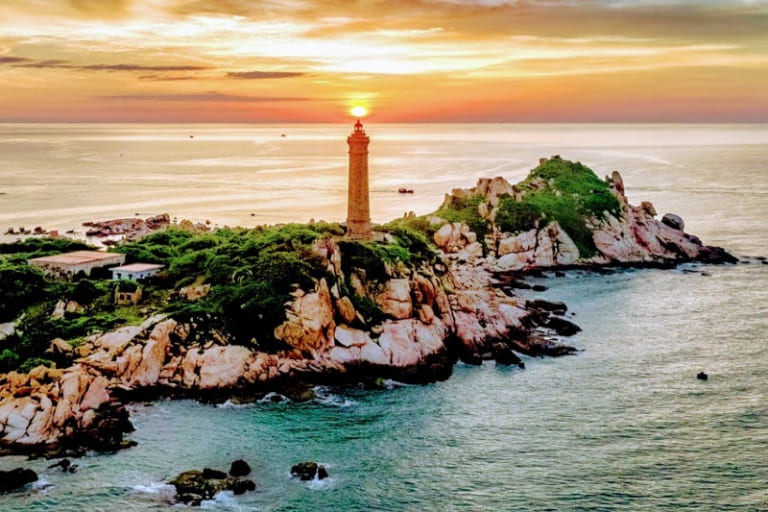
The penultimate stretch brings Phan Thiet and then Mui Ne, a resort town known for its kite surfing activity and sand dunes. Smooth and traveling through Tien Thanh’s sun-drenched fishing hamlet tucked under red sand cliffs, this 20-kilometer portion offers a picturesque climax before arriving at Mui Ne. The well-developed beach scene of Phan Thiet presents both opulent and reasonably priced lodging, so suited for a ride along one of Vietnam’s most picturesque coastlines.
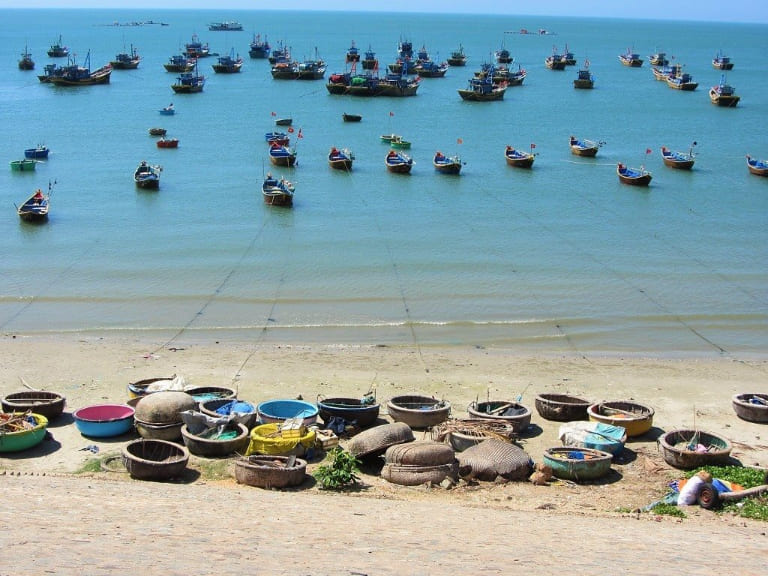
Safety Tips for a Smooth Journey
Starting from Ho Chi Minh to Mui Ne by motorbike is exciting, but always safety should come first. These thorough safety guidelines will help to guarantee a seamless and fun trip:
Wear a Quality Helmet and Protective Gear
Although Vietnam mandates that all motorcyclists wear helmets by law, more than just following the law—a decent helmet can literally save your life in an accident. Make a good helmet investment for full face coverage and a snug fit. To further guard yourself from possible injuries and road debris, think about also sporting gloves, elbow and knee padding, and a strong jacket.
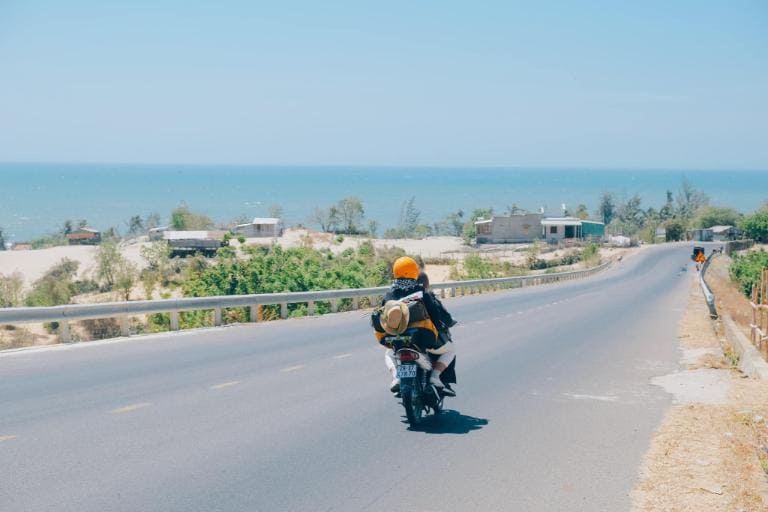
Check Your Motorbike Thoroughly
Check your bike to be in flawless running order before you start the journey. Verify the state of the tires, horn, brakes, and lights. Inquire of the rental agency to be sure routine maintenance has been done if you are renting a bike. Preventing breakdowns or mishaps on the road can be much aided by a brief inspection.
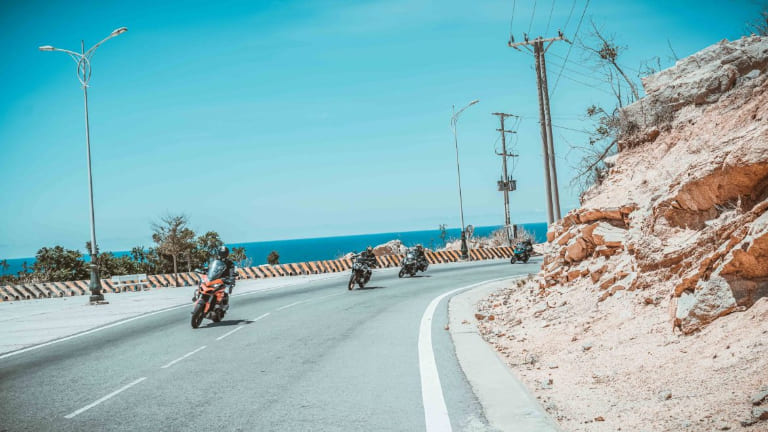
Plan Your Route and Use GPS
Although the travel from Ho Chi Minh to Mui Ne is simple, it’s always advisable to have a well-defined path in mind, particularly if you are not familiar with the surroundings. Though you should always have a paper map on hand in case of connectivity problems in far-off locations, use a dependable GPS device or a map app on your phone. Following main highways whenever you can also help you stay away from difficult and maybe dangerous paths.

Be Mindful of Weather Conditions
Particularly during the rainy season, which runs May through October, Vietnam’s weather can be erratic. Motorcyclists run a danger when rain makes roads slick and visibility poor. Before you start your journey, check the weather forecast and think about postponing your trip should rain be expected? Should you find yourself riding in rain, slow down, turn on the headlights of your bike, and use great caution—especially on hills and turns.

Riding from Ho Chi Minh to Mui Ne by motorbike is an experience like no other. The trip provides the ideal balance between leisure, adventure, and cultural learning. This tour seems to be the highlight of your visits in Vietnam, whether your search is for a quiet haven or the excitement of the open road.
Related Posts:
- Beautiful Routes in Southern Vietnam: Scenic Motorbike Adventures
- Saigon to Phu Quoc Island Motorbike Loop: The Ultimate Vietnam Adventure
- Ho Chi Minh Midnight Motorbike Tour – Discover Saigon’s Nightlife in Style
- Saigon to Ca Mau Loop: The Ultimate Guide for Southern Vietnam Exploration
- Phan Rang to Cam Ranh by Motorbike: Ultimate Travel Guide for Adventure Seekers





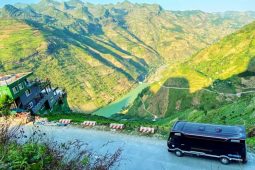


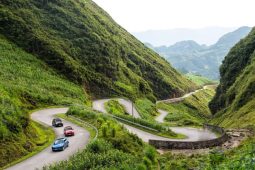


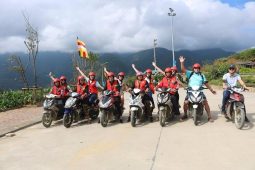
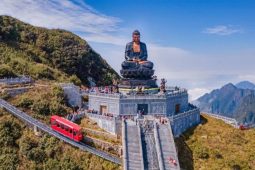
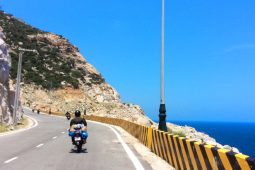
Be the first to comment!